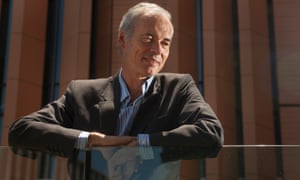University of New South Wales colleagues pay tribute to pioneer with
‘Crocodile Dundee persona’ who died age 60 from malignant melanoma
Colleagues and friends remembered him as a brilliant scientist and kind mentor whose work revolutionised the affordability of solar energy around the world.
He won the Australia prize – the nation’s pre-eminent science prize – in 1999, after holding the world record for solar efficiency for decades along with his mentor Martin Green.
His invention of advanced hydrogenation technology boosted the efficiency of solar cells a hundredfold, and won him the UK Institution of Engineering and Technology’s AF Harvey Engineering prize in 2013.
His UNSW colleague Dr Matthew Edwards hailed him as an “unassuming man” known and loved for “his Crocodile Dundee persona”.
“[He] took students to Nepal and Nicaragua to set up solar for communities in need of clean water and power, wrote fundamental solar textbooks, started the first and still only specialised photovoltaic degree in the world,” he said.
“He won pretty much every award under the sun except the Nobel, which I wouldn’t have been surprised to see heading his way if he were still here.
“He was the Einstein of the solar world and it’s hard to put into words his contribution to the planet.”
UNSW’s dean of engineering, Prof Mark Hoffman, said: “Stuart Wenham will be remembered for his selfless and continuous efforts to make the world a better place to live.”
Zhengrong described him as “a great global solar leader who made solar affordable and accessible to everyone”, while Australia’s Smart Energy Council praised him as “an unsung Australian hero”.
Born in 1957, Wenham grew up in Bexley North in Sydney and graduated from UNSW in 1981 with the university medal in electrical engineering. With Dr Bruce Godfrey, he set up Australia’s first solar cell manufacturing line.
His research always aimed at increasing the uptake of solar power by reducing costs and boosting efficiency.
“The main barrier to widespread use has always been one of cost,” he said after receiving his Australia prize in 1999.
“10 years ago, I expressed considerable scepticism as to the likelihood of solar panels appearing on significant numbers of rooftops … Now I believe it is only a matter of time.”

No comments:
Post a Comment